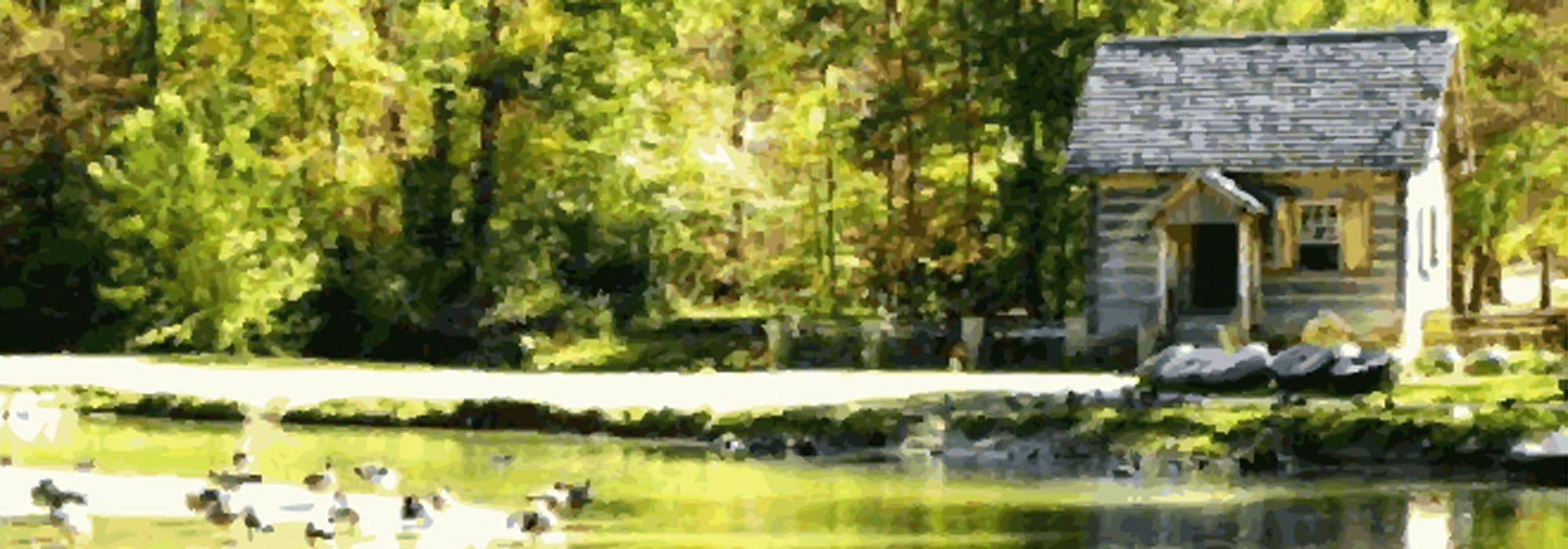It Takes One: Anthony Flaccavento
Born in New York City, and raised in Baltimore, Maryland, I first became interested in farming through my dad’s modest organic garden. Living on the outskirts of Baltimore, my father was an avid gardener and composter, and an early follower of Robert Rodale.
When I was ten years old, I planted some sweet corn in the rock hard clay underneath our swing set. When my dad saw that the corn somehow broke its way through and emerged as a puny but determined stalk of corn, he told me I could have a spot in the garden the next year. From that point forward, I was hooked.
I first came to the Appalachian region of the country when I was an undergraduate studying agriculture and environmental science at the University of Kentucky. I had a summer internship in Harlan County working with small farmers and landowners. After graduation, I spent two years as an environmental scientist for an engineering firm, traipsing up and down through the Appalachian counties of eastern Kentucky, meeting landowners, taking soil samples, walking across strip mines.
In 1983, I left Kentucky to pursue a Masters degree focused on economic and social development at the University of Pittsburgh. I assumed that I would end up in a developing country, putting my agriculture and environmental background to use to help people become more self-reliant. As graduate school came to a close, and my first child was emerging from diapers, we decided to stay in the United States. At that point, I took a job with the Catholic Diocese of Richmond, Virginia, directing their Appalachian Office of Justice and Peace.
After ten years of very gratifying work helping to start low-income home ownership programs, doing environmental advocacy and education, a small group of colleagues and I launched Appalachian Sustainable Development (ASD). The origins of ASD came from a mutually shared frustration: it seemed that folks working for jobs were at logger-heads with others trying to protect the environment or improve the well-being of workers. The concept of “sustainable development,” not yet commonly discussed in our country, seemed to be the bridge between ecological health and economic well-being.
How would you define a cultural landscape?
A cultural landscape to me is of necessity tied to the ecological landscape. Throughout most of human history, each culture of peoples all around the world has been largely born in and nurtured by the particular ecological landscape where they lived. This included the language, eating habits, building materials, and countless other patterns of development, communication, and even social structure. It is only in very recent years that we have begun to divorce our cultural landscape from our ecological place. Our society’s obsession with “mobility” has in many respects led to placelessness for us, which I believe has largely eroded our culture. Thus, in modern times, many of us find ourselves working to rebuild the cultural landscape, based on both the wonderful assets and the particular limits of our places.
Why did you get involved in the landscape that was threatened in your community?
Since I was a teenager, I have had a strong desire to make the world a better place. When I began school at the University of Kentucky, I knew absolutely nothing about Appalachia. In fact, I pretty well fit the profile of a presumptuous northeastern suburban kid. However, after several years living and working in these communities, I found that it was a landscape not only of significant need but of extraordinary resilience, humility, and opportunity. Having lived in the central Appalachian region for the past twenty-five years, and raised our three kids here, this is clearly our home.
The particular landscape of the Appalachian region is varied. However, there are certain consistent features: the region is two-thirds to three-fourths forested, and this forest is both rich and widely degraded. Much of the region has coal deposits and/or natural gas. This has certainly created wealth for some and, for a period of time, a lot of well-paying jobs. The predominance of these fossil fuel resources has also greatly altered both the physical landscape and the culture and economy of the region.
The other feature is the array of small but biologically diverse streams and rivers that run through so much of Appalachia. And along side these rivers rest some of the most fertile ground for raising crops, along with rolling hills for pasturing livestock.
How did your understanding of this landscape change as a result of your advocacy efforts?
My understanding of this landscape has evolved steadily in the twenty-five years I have been here. Initially, I saw primarily “need” and felt that my role was to bring resources and answers. Over time, while these needs have not gone away, they have been counterbalanced by the wide array of assets that I at first overlooked. These are fundamentally ecological assets – diverse forests, rich pasture lands and small but fertile bottom land for crops – but also cultural. One of the enduring features of Appalachian communities and people has been their resourcefulness and resilience. The ability to make the most of what you have and find contentment in relatively simple things and to derive solutions and innovation out of necessity is a feature of Appalachian communities.
Did the understanding of others change as well? If so, how?
I think that one of the most important “successes” that we have had at Appalachian Sustainable Development is to help a broad base of people see our region through the lens of assets and opportunities rather than need and want. This is true not only of the thousands of people now eagerly attending farmers markets that have sprung up all around the region; or shopping at local grocers and restaurants buying local and organic foods; or of the contractors, builders and architects purchasing local, sustainably sourced flooring and wood products, but also of politicians at state and federal levels who have begun to recognize that economic health and ecological sustainability can and must be seen as two sides of the same coin. This is a rather dramatic shift in thinking. While it has not permeated every political leader or branch of government, it has certainly insinuated itself into the thinking of economic development leaders, forestry and agriculture officials, county extension agents and many other folks who help determine the economic and environmental path of community.
Perhaps the simplest way to say it is that people are beginning to see that a robust economy and a healthy ecosystem must be pursued together rather than in opposition.
What is the message that you would like to give our readers that may inspire them to make a difference?
We have a saying here at ASD: Rather than trying to change people’s minds and hearts so they will live differently, we believe that people can “act into a new way of thinking”. By this we mean that the small, often mundane steps that we make day in and day out add up to profound consequences for the ecosystem and for our neighbors in different parts of the world. To the degree that we buy from local businesses rather than big boxes, support a small organic farmer at the farmers market or through a local grocer, rather than always looking for the best deal at Wal-mart; seek building materials, furnishings and other things from both the local landscape and local artisans, rather than purchasing imported products of unknown origin, to that degree, we help to build a better world with our daily habits. We have found that as people begin to do this, they also begin to see the world differently and to understand their place in it in a new and more empowered light.







